I am trying to build a circuit that amplifies an electret microphone. I have made it based of a youtube video.
The microphone sort of works at this point, however there is huge amounts of noise around 0 to 100 Hz.
I have connected the mic to my PC and with some software analysed the frequencies and it gives the following graph:

The graph is what the microphone puts out when it is in a mute environment.
I have used capacitors to remove any noise from the power supply, and I have tries using a high pass filter but that doesn't seem to really solve anything as I would need to use a very high cutoff frequency.
I should also note that when I increase the gain, the noise also increases, so I assume the noise comes before the signal is amplified.
This is the circuit as shown in the video, I have made mine exactly alike, also using the same op-amp.
